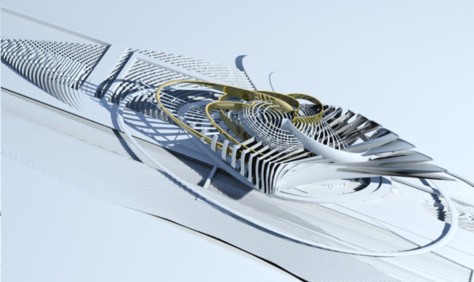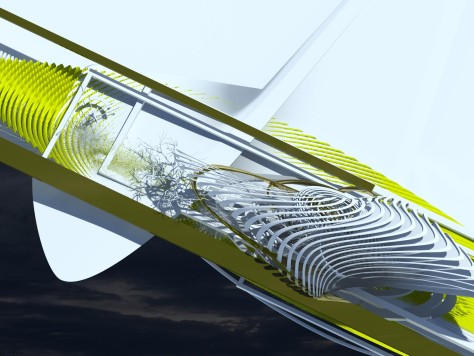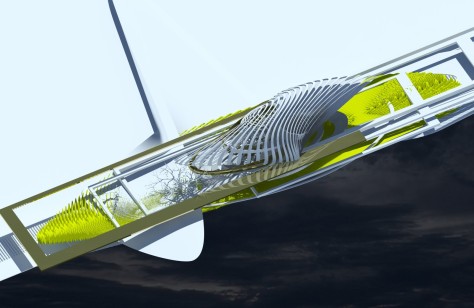
The project has been commissioned by The city of Ordos. It is an open temple located on the outskirts of the Ordos desert, the Buddhist temple is an area for meditation and religions ceremonial offerings. Originally the ancient Mongolian practice of air burial and Mongolian Buddhist rituals dictated the design.

The extreme changing climate and light levels of the physical context was an important criteria to embrace. The many salt lakes and sand dunes are scattered with shocks of colourful and unexpected vegetation. The sand dunes whistle as the winds descend on the desert creating an almost spiritual experience, it is this environment which has suggested the location for a temple.

There are a series of stone alters and makeshift temples scattered within the desert for nomadic peoples but this will act as the ephemeral monument to religious rituals and ceremonies. In Chinese Taoist and Buddhist temples, the inner spaces are scented with thick coiled incense, which are either hung from the ceiling or on special stands.

Worshipers at the temples light and burn sticks of incense in small or large bundles, which they wave or raise above the head while bowing to the statues or plaques of a deity or an ancestor. Individual sticks of incense are then vertically placed into censers located in front of the statues or plaques either singularly or in threes.

The main idea behind the form is the unwinding of smoke and incense within existing Buddhist temples the incense burns as a way of purifying the community and its physical environment. The incense is composed of aromatic herbs and plants found in the Ordos desert, it is used in religious ceremonies for meditation, purification and aromatherapy.

The Chinese and Mongolian culture uses coils of incense, extruded and shaped into a coil without a core, which can burn from hours to days, and is commonly produced and used by Chinese/Mongolian culture; this was the formal strategy using a coiled unwinding form which reflects not only the ever changing environment but the smoke associated with incense burning rituals.

The inner structural core contains the Buddha’s which become more and more evident as the worshiper walks around the design. The striated sections act as a veil similar to that of as smoke filled room, glimpses and views of the statues as well as the meditation areas give an ephemeral feel to the design.

The worshiper walks around in ever decreasing circles eventually becoming closer to the Buddha’s and the prayer/meditation area. Offerings are left on ledges which are a part of the main structure, they are a part of the entire scheme stretching out and across creating a series of winding elements that define the route through the design as well as the ceremonial rituals that are taking place.

The main structure consists of a steel core off which an highly polished series of chrome and aluminium elements unwrap, they are cantilevered giving the idea of floating, a series of suspended materials float like smoke defining areas into which the congregation can gather or find smaller more intimate areas to make offerings. Originally the design was to include the ancient ritual of sky burials as a nod to what up until recently was a common practice within Mongolia and Tibet, the practice itself continues but not a soften as pre Communist reign.

Ordos and inner Mongolia has a very strong identity regardless of the political and social changes it has faced, the practices are ingrained within the environment, into the people and their culture regardless of the latest extreme planning and architectural interventions the desert is not carte blanche and should never have been treated as such. Culture embraces change but becomes more immovable and impenetrable when that change is redundant. Source by Margot Krasojevic.

Location: Ordos, Mongolia
Architect: Margot Krasojevic
Year: 2012 – ongoing
Client: Professor Fan Xiang, City of Ordos
Images: Courtesy by Margot Krasojevic













